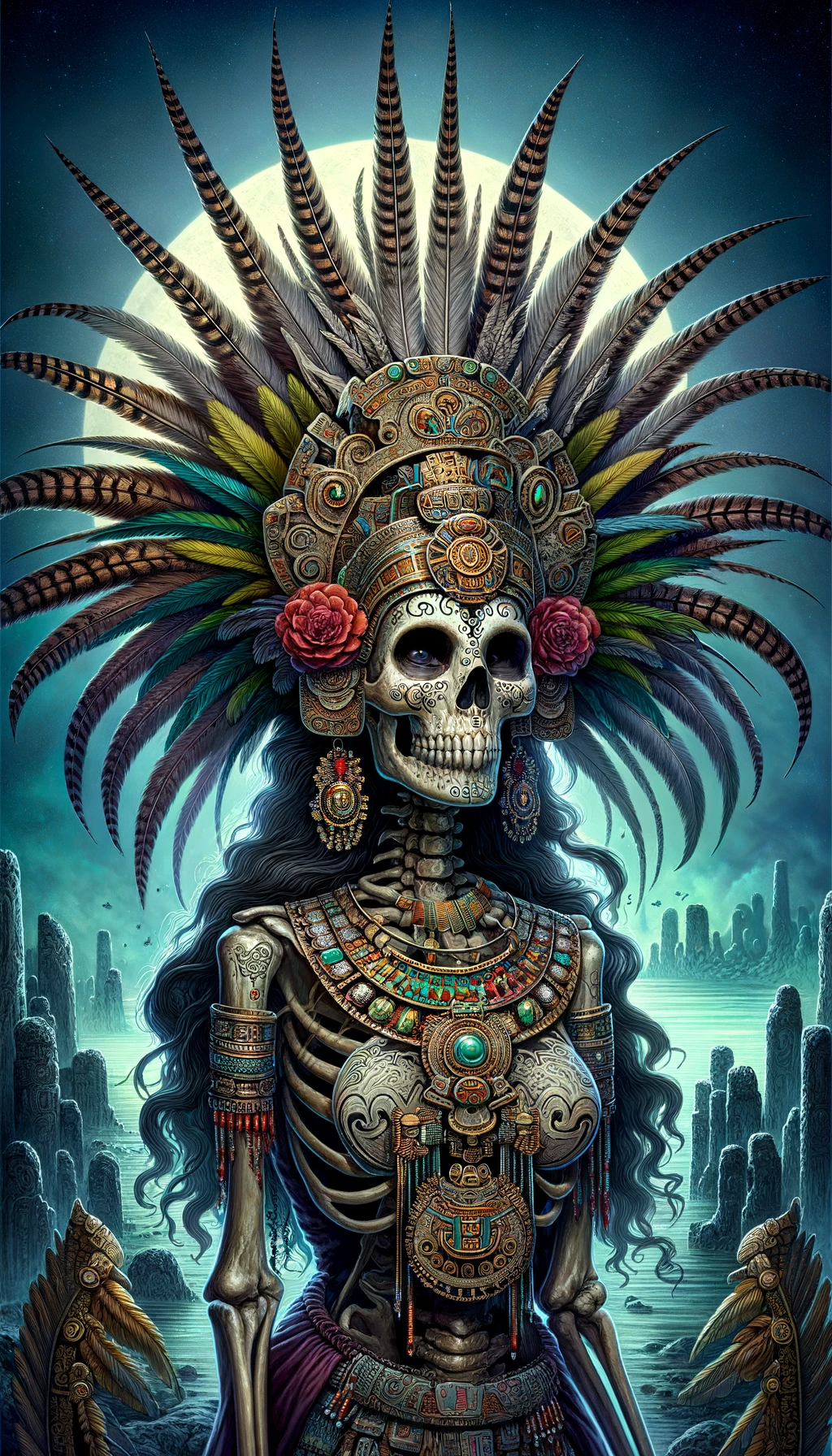
In the pantheon of Aztec mythology, Mictecacihuatl stands out as a captivating and enigmatic figure. Known as the "Lady of the Dead," she presided over the underworld and played a pivotal role in the ancient Aztec beliefs about death and the afterlife.
Historical Context
The Aztecs, a Mesoamerican civilization that thrived from the 14th to the 16th century in what is now Mexico, developed a complex religious system with a pantheon of deities. Mictecacihuatl, wife of Mictlantecuhtli, the Lord of the Underworld, was a prominent deity in this system. The Aztecs believed in a multi-layered underworld called Mictlan, where Mictecacihuatl reigned, overseeing the bones of the dead.
Mythology and Significance
According to Aztec mythology, Mictecacihuatl was born into the underworld and was assigned the role of safeguarding the bones of the deceased, which were considered precious and powerful. She is often depicted with a skeletal appearance, symbolizing her connection to death and the afterlife.
One of her primary roles was to preside over the annual festival dedicated to the dead, which later evolved into the modern Day of the Dead (Día de los Muertos) celebration. During this festival, it was believed that the spirits of the deceased returned to the world of the living. Mictecacihuatl's presence was thought to bless these spirits, granting them safe passage and ensuring their well-being.
Iconography and Depictions
Artistic representations of Mictecacihuatl are both fascinating and eerie. She is often portrayed as a skeleton or as a figure wearing a skirt of snakes, symbolizing her dominion over the dead. Aztec art also depicts her with gaping jaws, representing her role as the devourer of stars during the day. This iconography highlights the Aztecs' complex understanding of life, death, and the cosmos.
Cultural Impact and Legacy
The legacy of Mictecacihuatl extends far beyond the ancient Aztec civilization. Her influence can be seen in the modern Day of the Dead celebrations, where elements of indigenous and Christian practices blend. Families set up altars with offerings (ofrendas) to honor the dead, a practice echoing the ancient rituals dedicated to Mictecacihuatl.
Conclusion
Mictecacihuatl's story is more than just a tale from a bygone era; it is a testament to the enduring human fascination with the mysteries of life and death. As the Lady of the Dead, she serves as a reminder of the cyclical nature of existence and the enduring presence of the past in the present. Through understanding figures like Mictecacihuatl, we gain insight not only into the beliefs of the Aztecs but also into the universal questions that have intrigued humanity across cultures and ages.
Historical Context
The Aztecs, a Mesoamerican civilization that thrived from the 14th to the 16th century in what is now Mexico, developed a complex religious system with a pantheon of deities. Mictecacihuatl, wife of Mictlantecuhtli, the Lord of the Underworld, was a prominent deity in this system. The Aztecs believed in a multi-layered underworld called Mictlan, where Mictecacihuatl reigned, overseeing the bones of the dead.
Mythology and Significance
According to Aztec mythology, Mictecacihuatl was born into the underworld and was assigned the role of safeguarding the bones of the deceased, which were considered precious and powerful. She is often depicted with a skeletal appearance, symbolizing her connection to death and the afterlife.
One of her primary roles was to preside over the annual festival dedicated to the dead, which later evolved into the modern Day of the Dead (Día de los Muertos) celebration. During this festival, it was believed that the spirits of the deceased returned to the world of the living. Mictecacihuatl's presence was thought to bless these spirits, granting them safe passage and ensuring their well-being.
Iconography and Depictions
Artistic representations of Mictecacihuatl are both fascinating and eerie. She is often portrayed as a skeleton or as a figure wearing a skirt of snakes, symbolizing her dominion over the dead. Aztec art also depicts her with gaping jaws, representing her role as the devourer of stars during the day. This iconography highlights the Aztecs' complex understanding of life, death, and the cosmos.
Cultural Impact and Legacy
The legacy of Mictecacihuatl extends far beyond the ancient Aztec civilization. Her influence can be seen in the modern Day of the Dead celebrations, where elements of indigenous and Christian practices blend. Families set up altars with offerings (ofrendas) to honor the dead, a practice echoing the ancient rituals dedicated to Mictecacihuatl.
Conclusion
Mictecacihuatl's story is more than just a tale from a bygone era; it is a testament to the enduring human fascination with the mysteries of life and death. As the Lady of the Dead, she serves as a reminder of the cyclical nature of existence and the enduring presence of the past in the present. Through understanding figures like Mictecacihuatl, we gain insight not only into the beliefs of the Aztecs but also into the universal questions that have intrigued humanity across cultures and ages.